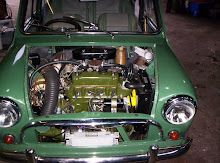These are in the engine compart¬ment. Wipe the caps and tops clean before unscrewing the caps to check the fluid levels. Top-up if necessary to within £ in. of the top of each reservoir, using Lockheed Heavy-duty Brake and Clutch Fluid.
It should be emphasized that this is, primarily, a precautionary check. If the systems are in good condition, topping-up should be required only at very long intervals. But leaks can develop from hydraulic pipelines and screwed unions, or past rubber seals in the operating cylinders; and loss of fluid from the braking system could have disastrous results. Alter¬natively, if the clutch operating system is affected, it will be impossible to free the clutch completely, thus virtually immobilizing the car.
If the level of the fluid in either reservoir has fallen appreciably, there¬fore, an assistant should be asked to apply firm pressure to the appropriate pedal while the pipeline and operating cylinders are minutely examined for any signs of leakage. If slight leakage has occurred—say, from a slack union—it may not be sufficient simply to tighten the union and top-up the reservoir; air may have entered the system, giving the pedal a charac¬teristically "spongy" feel. The method of bleeding off the air is described in Chapter 10.
A further point to check is that the air vent holes in the filler caps of the reservoirs are clear. If these become choked there is a risk of, the brakes dragging or the clutch slipping, depending on which reservoir is affected.
Saturday, 17 October 2009
Brake and Clutch Fluid Reservoirs
Posted by Info Mini Cars at 03:47
Subscribe to:
Post Comments (Atom)


0 comments:
Post a Comment